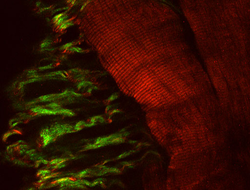Protein: Categories and Functions
Published: January 21, 2022
Proteins consist of sequences of amino acids to which other substances may be attached.
Your body can synthesise many amino acids, but some amino acids can only be obtained from dietary protein. These are known as essential amino acids.
Together exogenous (dietary) and endogenous (internally synthesized) amino acids are used by your body to synthesize 1000s of proteins necessary for the optimal function of your body.
The proteins that your body makes have specific sequences of amino acids.
These provide proteins with their unique characteristics that are specific to the function each protein performs.
There are several general categories of proteins, identified by function, which are summarized below. These general categories are made up of sub-categories.
Enzymes are proteins which function as catalysts and are essential for life. In general catalysts are substances that alter the rate of chemical reactions.
In your body, enzymes alter the rate of 1000s of metabolic chemical rections.
Enzymes are also identified by the way in which they react with other molecules (substrates):
- Hydrolases split or sever substrates
- Isomerases move atoms from one part of molecule to another part of the same molecule
- Ligases or synthases join substrates together
- Oxidoreductases move electrons between molecules and within molecules
- Transferases move functional groups. A functional group is a collection of atoms in a molecule that participate together in a characteristic reaction
Hormones
Hormones, in general...link to the full article to learn more.
References
1.
Gropper, S.S., Smith, J.L. & Groff, J.L. (2005). Advanced Nutrition and Human Metabolism (4thEd.). Belmont, CA: Thomson Wadsworth.
2.
Whitney, E. & Rady Rolfes, S. (2005). Understanding Nutrition. Belmont, CA: Thomson Wadsworth
5.
Gareth White: Grasp (Anthony Nicholls, Kim Sharp and Barry Honig, PROTEINS, Structure, Function and Genetics, Vol. 11, No. 4, 1991, pg. 281ff).

